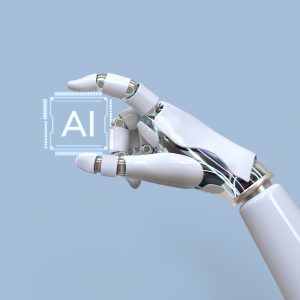AI for Us Today Is Like Electricity Was for People Eighty Years Ago
Imagine waking up one morning and finding that electricity no longer exists. No lights, no refrigerator, no internet, just silence, darkness, and inconvenience. That’s how many of us would feel today if AI suddenly disappeared.

Over the last two years, AI has emerged from being a niche tech tool into a force shaping every aspect of our lives, in much the same way electricity did in the early 20th century. It’s no longer a futuristic concept; it’s a present reality, touching everyone, from five-year-old children learning their ABCs with AI tutors to elderly individuals asking AI about their medications without needing to navigate complex websites.
The Parallels Between AI and Electricity
How Electricity Changed the World
Eighty years ago, electricity was a marvel. It brought light into homes, powered factories, and fueled inventions that reshaped daily life. People who experienced its arrival remember the thrill and the gradual realization that life without it would be unimaginable.
The Similar Revolution Happening with AI
Today, artificial intelligence benefits us in similar ways. Instead of lighting bulbs, it illuminates possibilities: personalized learning, instant language translation, health monitoring, and creative assistance. Like electricity, AI is becoming an integral part of society—a utility that operates quietly yet transforms everything.
The Rapid Development of AI Tools
The Past Two Years: Unprecedented Growth
In just 24 months, the development of AI tools has skyrocketed. These advancements have even impacted traditional web traffic; fewer people rely on static websites because AI provides instant, tailored answers.

AI’s Expanding Role in Everyday Life
Cooking, Fitness, and Personal Assistance
From suggesting healthy recipes based on what’s in your fridge to recommending gentle stretches for your morning routine, AI tools are becoming like personal consultants. They help with simple daily decisions, freeing mental space for what matters most.
AI as a Daily Consultant
Need to plan a balanced meal for a diabetic family member? Curious about local sports clubs? AI offers quick, personalized responses that would have taken hours of online searching a decade ago.
AI for All Ages
AI for Children: Learning Made Easy
Picture a five-year-old asking ChatGPT for learning activities. Instead of wading through complicated educational sites, a child can get simple, interactive explanations. AI can adapt its tone, vocabulary, and examples to match the child’s age, something a static web page can’t do.
AI for the Elderly: Accessibility and Ease of Use
Why Older Generations Love AI

Decades ago, technology was intimidating for older people. Fifty years ago, using a computer often required being an engineer. Even 30 years ago, the elderly struggled with user interfaces. But now, AI tools are voice-activated, language-flexible, and forgiving of typos, making them AI accessibility champions.
Many elderly users find asking an AI about their medications far easier than navigating search engines. The interaction is conversational and requires no technical expertise.
A Brief History of Technology Accessibility
The Early Days of Computing
In the 1970s, computers were rare, expensive, and complex. For most people, especially older adults, they were entirely inaccessible.
The Android Revolution
Fifteen years ago, Android systems made smartphones and apps more intuitive, opening doors for people with limited motor skills or minimal computer literacy.
The AI Leap in Usability
Now, AI tools take accessibility further by understanding natural language, translating on the fly, and offering visual or audio outputs tailored to the user’s needs.
How AI Improves Quality of Life
Breaking Language Barriers
One of the most remarkable Artificial Intelligence benefits is its ability to bridge languages in real time. Whether you’re travelling abroad, speaking with a relative who doesn’t share your native tongue, or reading an important document in another language, AI translation tools make the process smooth and immediate.
This is especially powerful for immigrants, international students, and global business communities where language barriers once meant lost opportunities.
Supporting People with Limited Mobility
For those with physical limitations, AI is not just a convenience; it’s a lifeline. Voice-activated assistants can operate smart home devices, order groceries, or schedule doctor appointments without the need for fine motor control.
By combining AI accessibility features with robotics, the future could see autonomous helpers managing household chores for those who cannot do them independently.
Personalized, Real-Time Assistance
Unlike static search engines, AI tools offer real-time, contextualized advice.
-
A parent planning a child’s science project gets a tailored guide in minutes.
-
A retiree managing a new diet can receive daily menu suggestions.
-
A student preparing for an exam can request a custom study schedule.
This ability to personalize makes How AI improves life quality not just a phrase, but a lived reality.
The Future of AI in Daily Activities
Integrating AI into Every Home
Just as electricity became a given in homes by the mid-20th century, AI technology adoption is rapidly becoming standard. Soon, households may have AI-integrated kitchens that suggest meals, AI-powered mirrors that give health insights, and AI assistants coordinating every task from bill payments to car maintenance.
AI vs. Electricity: The Next Big Utility
The AI vs. electricity analogy isn’t just poetic, it’s predictive. Like electricity, AI will fade into the background of daily life, invisible but indispensable. Its presence will be so constant that living without it will feel impossible.

Conclusion: Living Without AI is Like Living Without Electricity
If electricity powered the industrial and domestic revolutions of the past century, AI is powering the human and creative revolutions of today. It reaches across generations, from AI for children learning math to AI for elderly citizens managing health, and integrates into every corner of life.
For those still wondering if AI is worth embracing, the question might be reframed: Can you imagine life without electricity? Then imagine life without AI in 20 years. The answer will be the same; it’s not just a tool, it’s a foundation.
FAQs
1. What is the biggest benefit of AI for daily life?
AI saves time by providing instant, personalized assistance for everything from cooking to learning, making everyday tasks more efficient.
2. Can children use AI safely?
Yes, when guided by parents or educators, children can use AI tools for learning, creativity, and exploration in a safe and controlled environment.
3. How can AI help elderly people?
It offers easy, conversational access to information, helps manage medications, and can even provide companionship through chat-based interactions.
4. Will AI replace electricity in importance?
Not replace, but join it as a foundational utility for modern living — something we rely on constantly, often without noticing.
5. How fast is AI technology adoption happening?
Very quickly — similar to how electricity spread in the early 20th century. The last two years alone have seen explosive growth in AI integration.
6. Is AI accessible for people with disabilities?
Yes, AI offers voice commands, visual recognition, and other accessibility features that make it easier for people with disabilities to interact with technology.
Filter by price
-
Sale Product on sale
 Matris Animal Robot
Matris Animal Robot£95.00Original price was: £95.00.£90.00Current price is: £90.00. -
Sale Product on sale
 Matris Race Robot
Matris Race Robot£130.00Original price was: £130.00.£110.00Current price is: £110.00. -
Sale Product on sale
 Matris Smart Robot
Matris Smart Robot£105.00Original price was: £105.00.£100.00Current price is: £100.00.
